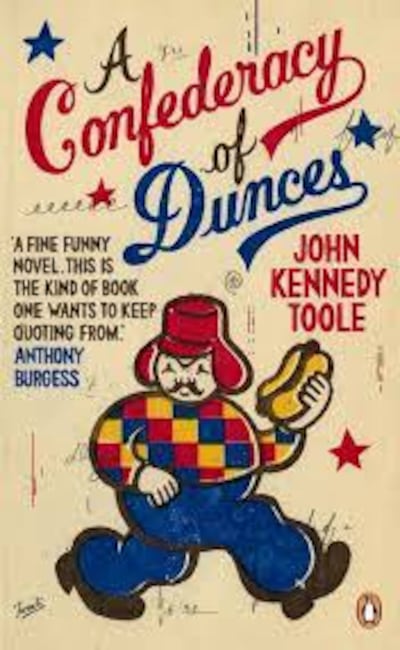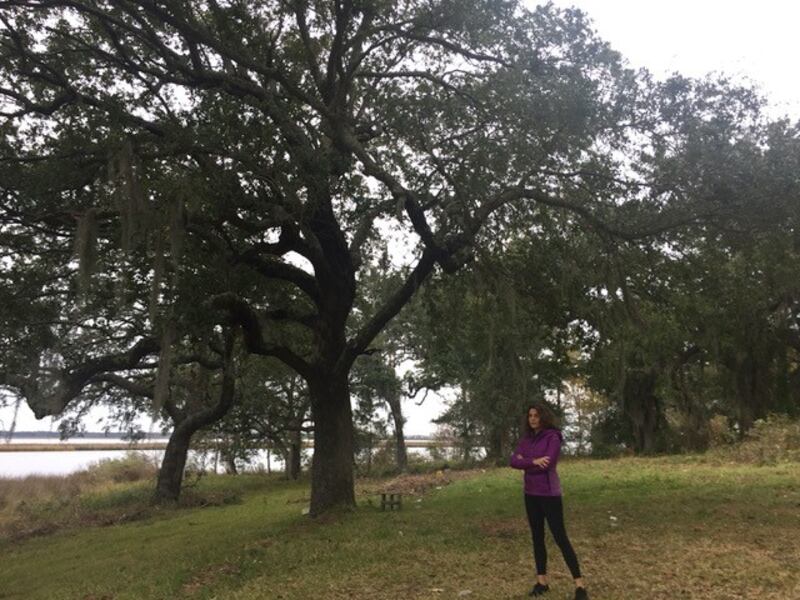When my friend and mentor, Kent Carroll, asked me to co-author a novel with him based on the remarkable events behind the making of John Kennedy Toole’s Pulitzer Prize winning masterpiece A Confederacy of Dunces, I was immediately intrigued.

Ignatius Reilly, the slovenly, pontificating misanthrope who embarks on one misadventure after another, was a different kind of hero. The book became a New York Times bestseller, sold millions of copies, inspired the likes of John Belushi, Will Ferrell and Steven Soderbergh, and earned a place on the top 10 most influential works of American literature.
There were a handful of biographies on Toole, who sadly killed himself before the world met Ignatius, but no one had attempted the backstory of A Confederacy of Dunces through a fresh lens. Not much was known about the genesis of Ignatius Reilly, the circumstances that led to his creator’s suicide or Thelma Toole’s campaign to get her son’s book published posthumously.
The more Kent and I talked about it, the more excited we became. Kent was also a part of the book’s history. He was the young editor at Grove Press who had acquired A Confederacy of Dunces 40 years earlier and shepherded it to fame. We’d already worked together on many books, two of which became New York Times bestsellers: my memoir, Please Stop Laughing at Me… that was a catalyst for the anti-bullying movement in America and put me at the forefront of intervention nationwide, a role that I’m still engaged in; and we co-authored Both of Us, movie star Ryan O’Neal’s memoir about his love affair with Farrah Fawcett. We’d encountered more than our share of surprises bringing these books to life but nothing could have prepared us for I, John Kennedy Toole.


Giving Toole a voice would become a years-long odyssey that as we immersed deeper into the research often made us feel like Alice going down the rabbit hole – missing police records and coroner’s reports, rumors of a Hollywood curse, the search for a long-lost manuscript, compelling evidence that another author may have plagiarised Toole’s work and gotten away with it, interviews with witnesses who inexplicably changed their stories. We wove all of it into the narrative.
Over time, Toole started to feel like a friend, so much so, that when Kent and I talk, I always refer to Toole as “Kenny”. This book started out as a biography of a novel. After meticulously poring through everything in Toole’s archives at Tulane, from scribbles on tiny scraps of paper, diary entries, letters and post cards, to childhood homework assignments, poetry and doodles, and traveling to places where Toole had been, attempting to retrace his steps, get inside his head, understand each phase of his life, I learned how a character can become a part of you and you he, which is what Kent and I are convinced happened to Kenny with Ignatius Reilly.
When I first introduced the character of Ignatius into our book, Kent and I weren’t sure it would work. Every book requires a painstaking series of decisions by the author and when two writers are involved, those questions take on more weight. We went back and forth on whether Ignatius making periodic appearances enhanced or detracted from the story, but the pull to have him there was so strong, it was as if Kenny himself was insisting upon it, to the point that it would awaken me at night. A famous author once told Kent that he had trouble sleeping because his characters wouldn’t shut up. I knew what he meant and I suspect Kenny must have too.
I, John Kennedy Toole is informed by facts but its truth comes from something outside of itself, a voice that I like to believe is Kenny, finally asking to be heard. We cover Toole’s early years growing up in New Orleans, his fraught adolescence and valiant efforts to become his own man despite the financial and emotional burden of responsibility for his parents. We trace his college career which he began at 16, his days as a graduate student in New York, the love affair that didn’t last, and the discontent that would permeate his life. We reveal the frail father, the narcissistic mother, and how Toole was the dutiful son caught in the eye of a storm. The novel also fills in the gaps between Toole’s struggle to find a publisher and what drove him to that lonely stretch of road in Biloxi where he took his last breath.
The popular consensus is that Toole was descending into mental illness and killed himself out of despair because Simon & Schuster, after three years of leading him to believe they would publish his book, did not. We argue that Toole sacrificed his life so that his book and characters could live on, in much the way a parent dies for their children. We found multiple references in Toole’s personal archives to writers he admired such as Flannery O’Connor and Emily Dickinson, who were not fully appreciated until after they were gone. We think that this may have been the real inspiration behind his suicide.

We also believe that Toole may have been working on another novel prior to his death and that the protagonist was based on a character he created named Humphrey Wildblood that pre-dated Ignatius Reilly. I discovered him peppered throughout the pages of one of Toole’s notebooks. Toole loved this character and from what I gleaned from conversations with Toole’s best friend, all indicators point to another book, unfinished somewhere, as a real possibility.
Kent and I are asked often if we believe the rumours that A Confederacy of Dunces has a Hollywood curse. Steven Soderberg was the first filmmaker to suggest it out loud but many others have wondered it. There have been failed attempts spanning four decades involving some of the biggest names in Hollywood who tried to turn the book into a film. Most of the actors who committed to playing Ignatius suddenly dropped dead before production began and there were other eerie events that have fuelled the rumour of a curse. We pose the question in I, John Kennedy Toole – what if some books are better off never being adapted into movies? JD Salinger may have had the right idea when he refused to sell the film rights to A Catcher in the Rye.
We also explore whether or not Toole may have been onto something when he began complaining to anyone who would listen that another author had plagiarised his work. Not long after his final correspondence with Simon & Schuster, they published a novel by George Deaux, entitled Superworm, in which the main character was inexplicably similar to Ignatius Reilly. Kent and I read both books side by side and can’t help but wonder if perhaps Toole’s unpublished work did somehow make its way to Deaux.
While the research for this book yielded some stunning surprises, the one that still bewilders Kent and I most was a phone conversation with the editorial assistant at Simon & Schuster who pulled the manuscript for A Confederacy of Dunces out of the slush pile and championed it to the editor who would end up corresponding back and forth with Toole for three years. Her name comes up several times in those letters. In one of them, in which Toole laments an ill-fated visit to their New York offices, she is specifically referenced. When I spoke with her, she denied even working there at the time.
Another compelling mystery is where Toole went in the three months preceding his death. When his body was found, there was evidence that he had gone to Hearst Castle in California and that he may have visited Andalusia in Georgia, the home of Flannery O’Connor. We offer a possible storyline of that journey. We suspect he may have written a suicide note during that trip and that his mother Thelma destroyed it. Toole was a prolific writer of letters. His archives are brimming with written correspondences ranging from the profound to the whimsical, and to assume that he wrote that vociferously in every other area of his life but didn’t write a suicide note is counterintuitive to everything we know about this man.
If A Confederacy of Dunces had been published in the 1960s and not almost two decades later in 1980, would it have won The Pulitzer and become an American classic? There are many authors who died thinking their work would never be read only to become legends after their demise. Toole admired them. Could he have been right about posthumous fame? We may never know anything for sure, except this: Kenny, if there’s something else you want to tell us, we’re listening.
Jodee Blanco is a New York Times bestselling author and speaker. She lives in Chicago.jodeeblanco.com












